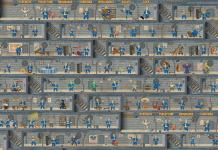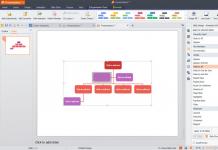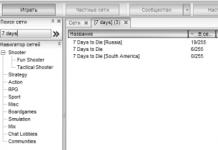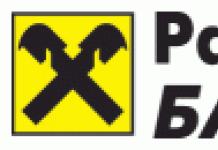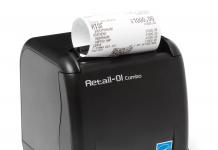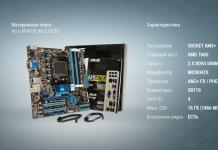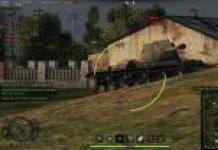The first stage of the SLS launch vehicle uses two auxiliary boosters that will propel the rocket into low Earth orbit. Next, the second-stage upper stage accelerator will come into play, which will be used to pull the payload out of low orbit and send it towards its final destination: the Moon, Mars or one of Jupiter’s moons, Europa.
As part of the first official launch, which most likely will not take place until 2020, the SLS carrier will be equipped with an interim version of the second stage. The agency is currently developing an “experimental second stage” that will allow the use of different upper stage configurations with different payload capacities. The first launch with the main second stage should take place in 2023-2024. According to the adopted technical documents, the second stage plans to use four RL-10 liquid-propellant rocket engines, which have repeatedly proven their reliability since their first use in 1961.
The problem is that the RL-10 engines developed and assembled by Aerojet Rocketdyne are very expensive. Ars Technica journalists were able to find out that on average, NASA had to pay $17 million for each RL-10 engine that will be used in the first test launch. The agency, apparently, was not satisfied with this situation, and in October it made an open proposal to private space companies: to find a cheaper alternative to reduce the costs of launch vehicle production. The published document stated that to prepare for the third flight (Exploration Mission-3) of the SLS launch vehicle, the agency needs four rocket engines by mid-2023.
Interestingly, already in mid-November the agency edited the document. It now says that NASA is not looking for a “cheaper alternative” to the RL-10 engines, but a “replacement.” Despite the fact that at first glance this may seem like a common lexical and stylistic device, the Ars Technica portal, citing anonymous sources from the space industry, reports that the change in the terminology used speaks volumes. In other words, NASA will abandon the RL-10 engines in the future. According to the agency's official comments on this matter, the document was edited with the aim of attracting a larger number of interested parties.
Blue Origin's Finest Hour
Some saw in the NASA document an attempt to hint in this way to the same Aerojet Rocketdyne that its RL-10 engines could be cheaper. Others say the agency's announcement shows it is open to changes to the design of the second stage itself and is open to proposals using a different set of engines. And if this is so, then NASA will most likely choose BE-3U engines, writes Ars Technica. Blue Origin plans to use them in the second stage of its New Glenn heavy-duty launch vehicle. They are a modified version of the BE-3 engines used as the main engines of the New Shepard rocket booster, which the company plans to use as a tourist rocket and which has already successfully flown (so far, as part of testing) 7 times. By the way, it should be noted that the same Orbital ATK is also considering BE-3U engines as the main second stage system for its planned Next Generation Launch System launch vehicle. The BE-3U was chosen because the engine is capable of producing 120,000 pounds of thrust, while the RL-10 only offers 100,000.
It is not yet clear how many and which companies responded to NASA’s call, but the collection of proposals ended on December 15.
2013-06-21. The delegation visited the Michoud Assembly Facility (MAF) plant, located in New Orleans (Louisiana), where Boeing, the lead contractor for the creation of the central rocket unit of the Space Launch System (SLS) heavy-class launch vehicle, created a modern equipment, mainly to significantly reduce the cost of production of the SLS launch vehicle, even at low rates. The MAF plant is one of the largest in the world and is owned by NASA. The visiting delegation, organized by Boeing, included NASA employees, local and state government officials, and media representatives. The purpose of the visit is to demonstrate new equipment for performing vertical welding (Vertical Weld Center), namely, a three-story center created by Boeing, Futuramic Tool and Engineering and PAR Systems, with the help of which cylindrical segments of the base module of the SLS launch vehicle with a diameter of 8.4 m will be formed by welding aluminum panels. With the help of new equipment, as well as specialists numbering less than 1,000 people, NASA and Boeing will be able to produce two basic modules of the SLS launch vehicle per year. The presented equipment is more advanced than what was previously used at the enterprise for the production of external fuel tanks (PTB) of the Space Shuttle reusable transport space system (MTKS). The use of new equipment significantly simplifies production processes and reduces production costs. Previously, to perform such work, from 3 to 5 pieces of various equipment were required, now the use of one tool allows not only to perform welds on the module, but also specialists can inspect the welding after completion of the work, which previously would have required moving the object to another working position. After the visit, U. Gerstenmaier, director of manned flights at NASA, praised the new vertical welding center and said that the planned launches of the SLS launch vehicle will be carried out infrequently, but with a high degree of safety, and also that the cost of creating the SLS launch vehicle will be significantly reduced . The SLS launch vehicle will be equipped with four additional RS-25 main engines, which were previously part of the Space Shuttle. A total of 16 of these engines are operated by NASA at the Stennis Space Center. The first launch of the SLS launch vehicle with a mock-up of the Orion capsule is planned for 2017. The next launch in 2021 depends on technical and political factors, but NASA plans to launch a manned mission to an asteroid to capture it and redirect it into high lunar orbit using new robotic spacecraft. NASA is funding $1.8 billion a year for the development of the SLS launch vehicle, including the construction of a rocket test facility in the United States. Mississippi and launch infrastructure at the Kennedy Space Center (Florida). Together with funding for Lockheed Martin's Orion crew capsule, the budget is nearly $3 billion a year. Given the costs and scale of the SLS launch program, NASA plans to make a manned flight to Mars. However, on June 19, 2013, during a congressional hearing on the SLS LV bill, the SLS LV's low flight speed raised doubts among some industry observers.It is planned that in terms of the mass of cargo launched into near-Earth orbits, SLS will be the most powerful operating launch vehicle at the time of its first launch, as well as the fourth in the world and the second in the USA super-heavy class launch vehicle - after the Saturn 5, which was used in the program "Apollo" for launching spacecraft to the Moon, and the Soviet N-1 and Energia. The rocket will launch into space a manned MPCV spacecraft, which is being designed based on the Orion spacecraft from the closed Constellation program.
The system in its basic version will be capable of launching 70 tons of cargo into the reference orbit. The design of the launch vehicle provides for the possibility of increasing this parameter to 130 tons in a reinforced version.
It is assumed that the first stage of the rocket will be equipped with solid rocket boosters and RS-25D/E hydrogen-oxygen engines from the shuttles, and the second stage will be equipped with J-2X engines developed for the Constellation project. Tests are also being conducted with the gas generators of the F-1 engines from the Saturn V launch vehicle.
The cost of the SLS program is estimated at $35 billion. The cost of one launch is estimated at $500 million.
Gallery
Art of SLS launch.jpg
Estimated type of launch of the base version media
SLS configurations.png
Planned media configurations (Block I, Block IA and Block II)
SLS Versions (metric).png
Manned Block I (70 t) and cargo Block II (130 t)
Art of the Space Launch System on Launch Pad.jpg
Proposed appearance of the launch complex
Write a review about the article "Space Launch System"
Notes
Links
- nasa.gov
|
|||||||||||||||||||||||||||||
| ||
Illustration copyright NASA
For several decades in a row, NASA did not have a heavy-class carrier capable of reaching the Moon. Now the American space agency is creating a rocket that can reach objects in the solar system more distant from us. The correspondent visited the enterprise assembling the first copies of the new rocket.
If you set out to remember just one fact from this article, pick this one: A new American rocket will be able to carry 12 adult elephants into orbit, which is the visual example NASA is using to illustrate the incredible power of its new rocket.
At the launch position, the height of the Space Launch System (SLS, Space Launch System) will exceed the height of the Statue of Liberty (93 m). The mass of the rocket will exceed the mass of seven and a half fully loaded Boeing 747 airliners, and the power of its engines will be the power of 13,400 electric locomotives. With the help of SLS, a person will be able to travel beyond the Earth's orbit for the first time since 1972, when the Saturn 5 carrier delivered the astronauts of the Apollo 17 crew, the last American manned expedition to the Earth's satellite, to the Moon.
“This will be a unique rocket,” says SLS program systems engineer Don Stanley. “It will help humans return to the Moon and go even further to asteroids and Mars.”
Stanley works at the George Marshall Space Flight Center in Huntsville, Alabama, behind the formidable fence of Redstone Arsenal, the base of the US Army Air and Missile Command. For more than 60 years, this is where the heart of the American missile technology development program for military and civilian purposes has been. Fenced area of 154 sq. km is dotted with testing grounds, test stands and decommissioned space equipment.
Universal rocket
Among the space "junk" on the base's territory is a fragile-looking structure used for ground testing of the rocket that delivered the first American astronaut into orbit; the thick metal shell of a nuclear-powered ship, the design of which was never realized; as well as the barrel-shaped engines of the Saturn 5. Near the parking lot lie spent solid rocket boosters from the Space Shuttle with a reassuring sign on the side: “Empty.”
As we pass these historic landmarks, Stanley says the new rocket will be much more versatile than its predecessors.
Illustration copyright NASA Image caption In 1972, the Saturn 5 carrier delivered the astronauts of the Apollo 17 crew to the Moon.“If you need to send a crew to an asteroid to change its orbit, our rocket can accomplish this task,” she says. “And if you need to fly to Mars, it will fly to Mars. SLS is capable of covering the entire range of potential space expeditions, which "is currently being reviewed by the US government."
The rocket is being built specifically for the manned Orion spacecraft, which was successfully tested (without a crew) in December last year. Although SLS is new, it incorporates many of the technologies from previous NASA programs.
The first four copies of the SLS will be equipped with engines left over from the Space Shuttle program. The rocket's solid rocket boosters will be stretched versions of those used on the shuttle, and the upper stage design is based on blueprints for the Saturn V, developed in the 1960s. Stanley doesn't see anything special in this technology borrowing.
“To get away from the Earth, we will one way or another need a rocket, which is why we use the developments of the Apollo and Space Shuttle programs,” she notes. “But, in addition to this, we are introducing new technological solutions. The central rocket unit was developed from scratch; "We are also applying new manufacturing technologies. The result will be an efficient and affordable rocket."
Bicycles and electric cars
The SLS itself is assembled six hours south of Huntsville at NASA's sprawling assembly facility in the New Orleans suburb of Michaud. The factory, almost a kilometer long, was previously used to assemble Saturn V rockets; until recently - the external fuel tank of the Space Shuttle.
Due to the gigantic size of the facility, employees move around the site on bicycles - or, if they're lucky, in white electric cars with a NASA logo on the side.
“We have hundreds of bikes here,” says technical director Pat Whipps as our electric car passes a group of cyclists. “At one time, our own bicycle repair shop was the largest in the southern United States.”
Illustration copyright NASA Image caption A rocket launch is always an impressive sight. What will the launch of SLS be like?We drive past sections and fairings of the new rocket, arranged around the plant like a modernist Stonehenge. The carrier elements are made of aluminum sheets. In some places the thickness of the outer shell does not exceed several millimeters. Structural strength is achieved thanks to internal metal lattice trusses. These shiny sections will soon be welded together to form the central rocket assembly, which will house the fuel tanks, engines and control systems.
“Everything in this program is huge; the size of the structures is also impressive, but the tolerances we need to maintain are extremely tight,” Whip says as we approach one of the welding machines looming above us. “Some of the rocket parts you have to look at from below, tilting your head back , just to see where they end, and the assembly accuracy must be thousandths of a centimeter."
Advanced welding method
Friction stir welding is used to join the individual parts of the rocket, literally gluing two layers of metal together.
“Conventional welding produces a lot of heat, open fire and smoke,” explains engineer Brent Gadds. “The method we use is different in that the metal does not completely melt. The two layers simply rub together. The temperature of the metal does not exceeds the melting point."
Illustration copyright NASA Image caption Friction stir weldingThis process is very interesting to watch: two plates are fastened together, after which a rotating roller, controlled by a computer, begins to move along the joint. It only takes a few minutes to weld even the longest sections, and the strength and reliability of the resulting seams is incomparably higher than using traditional welding methods.
The most impressive part of the New Orleans facility is the shop where the final assembly of the central rocket assembly is performed. The seventeen-story building is entirely occupied by an automatic welding machine - the most gigantic friction stir welding machine ever built.
“This is not just a machine increased in size,” notes Whips. “This is a completely new device. No one has ever done anything like this before. On the other hand, the rocket that we are building will be the largest ever launched from surface of the Earth."
Forward into the unknown
SLS's first launch is scheduled for 2018. Engineers at Michoud and the Marshall Center have a little more than two years to build the first core unit, test the booster engines and boosters, and then transport the rocket by barge along the Gulf Coast to its final destination. assembly at the Kennedy Space Center in Cape Canaveral, Florida. For safety reasons, the first flight - farther from Earth than the furthest manned missions in history - will be unmanned.
Illustration copyright NASA Image caption Perhaps SLS will be used for manned flights to Mars“We're going to send the rocket about 48,000 km further than the Apollo lunar missions flew,” says Stanley. “We need to strike a balance between the safety of future crews and the technical capabilities of the rocket - we want to make sure that we are taking acceptable risks.” .
Her point of view is shared by Whips, whose office walls have photographs of the crews of the fallen Challenger and Columbia shuttles. According to Whips, everyone at the Michaud facility understands that the rocket being built here is intended for manned flight.
"We are often visited by astronauts and their families. This helps us remember that our work is extremely honorable and responsible because human lives depend on it," he says.
Funding for the SLS program is stable, so there is virtually no doubt that, unlike a number of previous similar projects, this one will be completed. If work on the Orion launch vehicle and spacecraft goes on schedule, the first manned flight could take place by the end of the decade.
Illustration copyright Getty Image caption Americans want to be leaders in everything, including space explorationThe question is where the astronauts will go. The US political leadership has not yet decided how exactly to use the incredible potential of the new missile. Will it be a return to the Moon, a flight to an asteroid (the most popular option today) or a more ambitious project - an expedition to Mars? Whatever the decision of the White House and Congress, the main thing is that for the first time in more than 40 years, America again has the means to send manned expeditions into deep space.
"Our citizens want the United States to remain a world leader," Stanley says. "The United States is very competitive. We believe we must lead as a nation in many areas, including space exploration."
NASA is working on the largest launch vehicle in history, the Space Launch System. It is intended for manned expeditions beyond low-Earth orbit and the launch of other cargo, developed by NASA instead of the Ares-5 launch vehicle, which was canceled along with the Constellation program. The first test flight of the SLS-1/EM-1 launch vehicle is scheduled for the end of 2018.
NASA has long been working on inspiring interplanetary flight projects, but none of them can match the scale of the Space Launch System developments. The new rocket will be the largest in history. It will be 117 meters tall, which is larger than the largest rocket in history, the Saturn 5, the same one that delivered the module with Neil Armstrong and Buzz Aldrin to the moon.
It is planned that by the time of its first launch, SLS will become the most powerful operating launch vehicle in history in terms of the mass of cargo launched into near-Earth orbits.

It is assumed that the first stage of the rocket will be equipped with solid rocket boosters and RS-25D/E hydrogen-oxygen engines from the shuttles, and the second stage will be equipped with J-2X engines developed for the Constellation project. Work is also underway on the old F-1 oxygen-kerosene engines from the Saturn 5. It is planned that in terms of the mass of cargo launched into near-Earth orbits, SLS will become the most powerful operating launch vehicle in history at the time of its first launch, as well as the fourth in the world and the second super-heavy class launch vehicle in the United States - after Saturn 5, which was used in the Apollo program to launch spacecraft to the Moon and the Soviet N-1 and Energia. The rocket will launch into space a manned MPCV spacecraft, which is being designed on the basis of the Orion spacecraft from the closed Constellation program.

A super-heavy launch vehicle is, first of all, a pass for humanity to distant planets. This was the case with Saturn 5 and the flight to the Moon, and this will be the case with the Space Launch System. NASA developers make no secret that the rocket will become a key link in preparations for sending humans to Mars, and this could happen as early as 2021.

As optimistic as this may sound, it would be great progress for NASA to simply get off Earth. In 2011, the last program to launch American astronauts into space was discontinued. Delivery to the ISS is carried out on board Russian Soyuz. Adding fuel to the fire are private space programs like SpaceX, which will soon be ready to independently send astronauts into orbit.
To date, progress on the Space Launch System is progressing according to schedule. NASA is testing components of the initial launch vehicle design. The entire development is planned to be completed by 2017. The Space Launch System is a joint collaboration between NASA, Boeing, and Lockheed-Martin. Boeing is developing the rocket's $2.8 billion avionics systems, while Lockheed-Martin is responsible for building the Orion crew capsule that will be mounted on the rocket. Ultimately, NASA expects to spend about $6.8 billion on the Space Launch System from 2014 to 2018.




